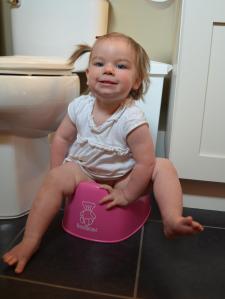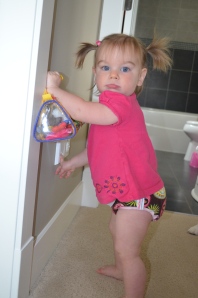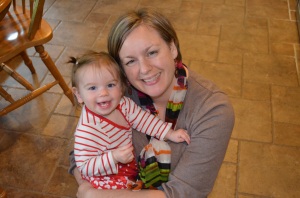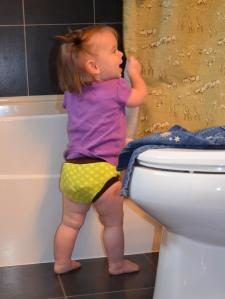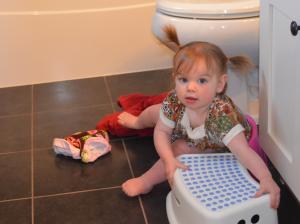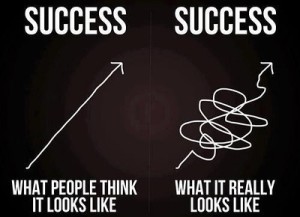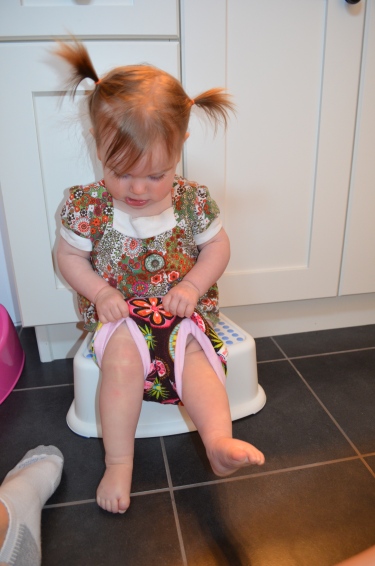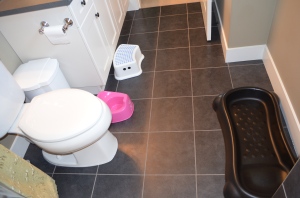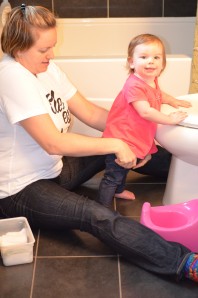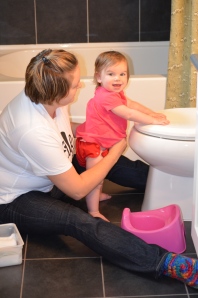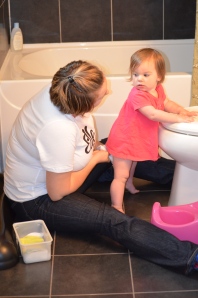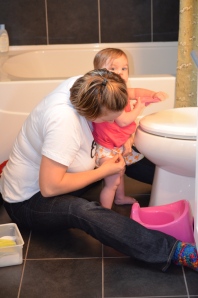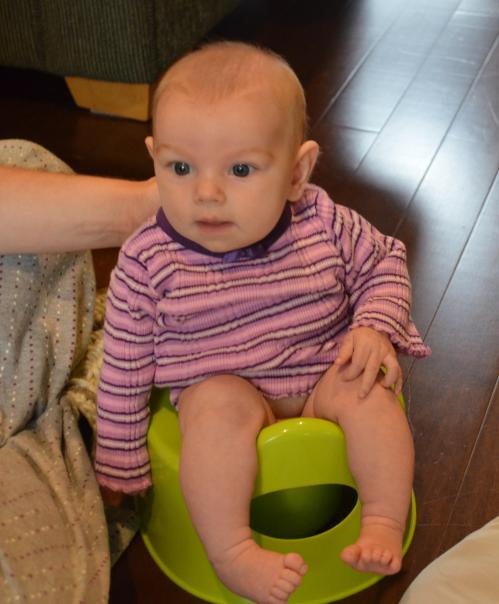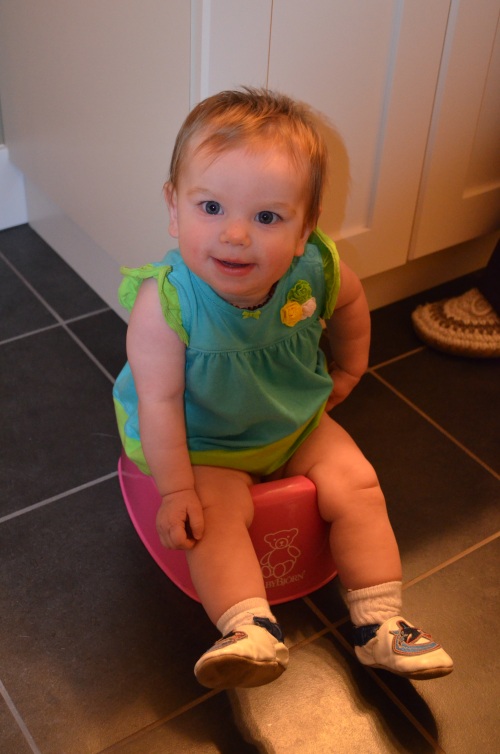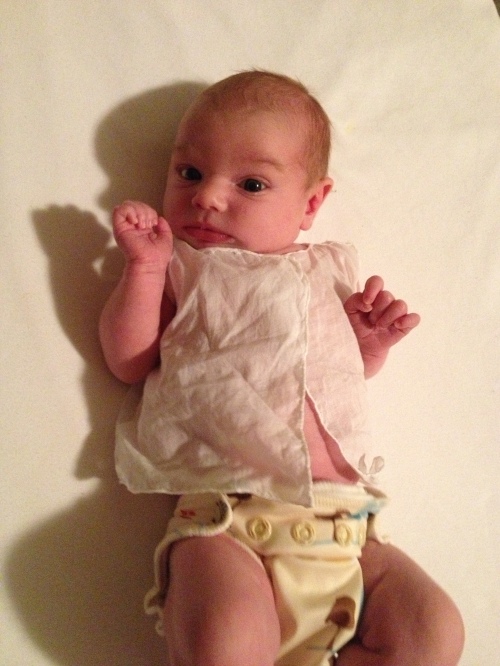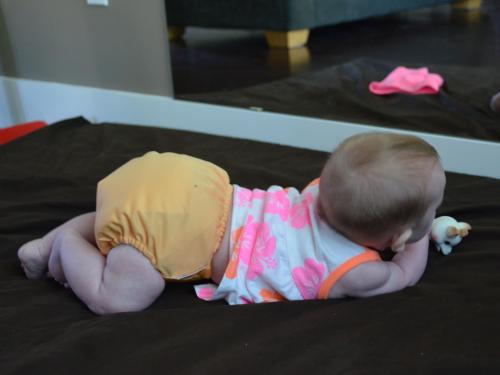By Carrie
I hope you’ve enjoyed following our journey of toilet learning this week from Cloth Diapers and EC, to Standing Diaper Changes and Underwear. To wrap up the week I wanted to share some of the reasons why I chose this route for toilet learning.
Power struggles are more common when toilet learning/training occurs at age 2-3. Ever heard of the “terrible two’s?” It’s common that two year olds have an increased desire to make their own choices and assert themselves. I want to take toileting out of the equation while A. goes through this. There will be more than enough other ways for her to assert herself and things to tantrum about. I hope that toileting is just a natural part of the day and that by age 2/3 A. will be ready for more responsibility and control of her own toileting.
Sensitive Period for Toileting
“The myelination of neurons necessary to ready the body for control of the bowels and bladder is completed by the time children are approximately twelve months old.” ~Montessori From the Start.
Between 12-18 Months children go through a Sensitive Period for toileting. This means that a child is gaining an awareness of their toileting needs during this time and if we take the steps to accommodate this developing awareness, then a child will more naturally learn to use the toilet than if we take efforts at a later stage. From my experience working with children at my preschool and seeing various Sensitive Periods in action, when children are in a Sensitive Period they have intense interest and learn the concept quite quickly. I want to devote my time to aiding my daughter during this Sensitive Period for toileting. I believe it will be more of a natural, gradual development towards toileting independence.
Decreased Constipation and UTIs
Many children who have joined my preschool and have recently been toilet trained experience constipation. While I’m not a medical doctor, I wonder if holding in poo (or pee) is related to the psychological development of asserting control which is typically stronger at age 2/3. (I also know it is important to keep up fresh fruits, fresh vegetables, and whole-grains in a child’s diet to decrease constipation at any age) Dr. Jill Lekovic in Diaper Free Before 3 indicates that earlier toilet learning decreases the risks for urinary tract infections and constipation. So does Gwen Dewar at Parenting Science.
Wiping a poopy bottom is not fun. Wiping a bottom that has pooped in the potty, not so bad. While the process may take longer than 3 days, typically the child who begins earlier is out of diapers at a younger age. Decreased time and money spent on (washing) diapers sounds good to me. There are also many who believe the increased use of disposable diapers has led to a later age for toilet training, when historically, and currently internationally, many children stop using diapers before age 2. I think that wearing underwear and eliminating in a toilet is more comfortable than diapers and I want to help my daughter experience greater comfort by being in underwear sooner.
Because a Child is Capable of it
I want to demonstrate to my daughter that I have faith in her abilities. I have heard from so many friends that their children, and many Montessori toddler teachers that the children in their programs, are successful wearing underwear by age 2. My early EC joys lead me to believe that my daughter does have the capacity to connect to her elimination and I want to support her in this.
“If parents remember that their mission is not a child in “dry pants” but a child successful in her formation of independence, coordinated movement, language, and will, they will know that their hard work on their child’s behalf is worth the effort.” ~Montessori From the Start
Nature furnishes special protection for the young. For instance, the child is born amidst love; his very origin is by love, and once born he is surrounded by the love of father and mother, a love which is not artificial or enforced by reason. ~Maria Montessori, Education For a New World

